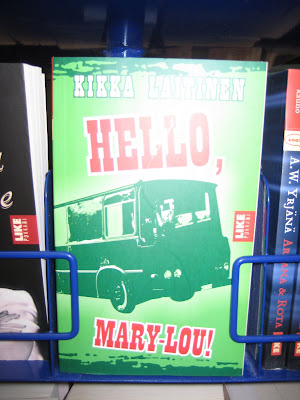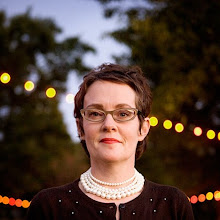
Michael Jackson is dead.
I am quietly, surprisingly, sad.
The Jackson 5 made pop-y, danceable music, breaking out of the music ghetto that bound artists to genres and audiences. Living in Canada I heard in their music the sounds of African Americans taking their rightful place in mainstream culture. They were cute, scrubbed boys, representing the up side to the social strife taking place in the US to our south.
Of course it was not easy for the break-through. The Jackson 5's contemporaries, the devout Mormon Osmonds, represented the mythic side of America, the side that today still thinks in polarized racial terms, even in the face of a mixed-race President. Generations of kids around the globe were entranced by Michael Jackson, and he set the stage for other artists of color to hit the big time.
But there was a price Michael Jackson paid for his incredible, shape-changing work.
A few years ago I curated a show called "Celebrity," which began as a discussion about celebrities who make art work. Once I dug into the research and realized that that would be an awful show (and I am not going to curate a show to mock amateurs), I turned instead to exploring the relationship of the fan to the unknowable star. I included work by Todd Gray, an LA-based artist who was Jackson's photographer from 1979-1984. Todd was allowed to keep copyright, something that would never happen now, and the pictures are from before the Jackson identity train ran off the tracks.

I wanted to include Todd's images of Michael Jackson in "Celebrity" because he was an emblem of the self-mutilation performed by celebrities in service of their fans, or to create some image known only to Jackson himself.

Jackson was unparalleled in his influence, breaking through racial and cultural barriers through his being and lyrics. But I just reviewed Jackson's video for "Black / White" from 1991, where women meld into men, blacks meld into Asians into whites...where it seems the message of equality is tinged with a hint of Jackson's continued erasure of his own cultural identity. Did living inside celebrity his whole life allow him to believe his dreams of reinvention, or was his idea of self simply perverted beyond recognition? But this is America, and he could do what he wanted with his money, fan expectations be damned.
I've been singing "ABC" in falsetto the past few days, much to Kevin's chagrin. Any normal singing voice makes the angelic sounds of Michael Jackson even more remarkable. But I never bought any of the music--I still don't collect music, I had no player when "Thriller" came out, and a few years ago, when I wanted to download some songs, none of the play list was available on itunes. The music lives only in my head, with snippets of memories alongside the notes.
I won't call Michael Jackson "King"--that label is taken, and recalls the bloated social body of Elvis's America in the 1950s. Jackson moved beyond the notion of America as King. Instead he induced many races of kids from around the globe to play with him. And while Jackson died at 50, which is old to some, he retained the endless potential of a Prince waiting for his rightful throne.


















